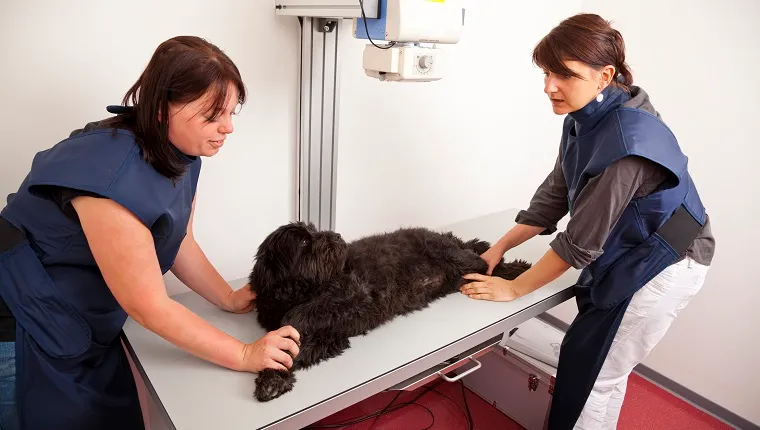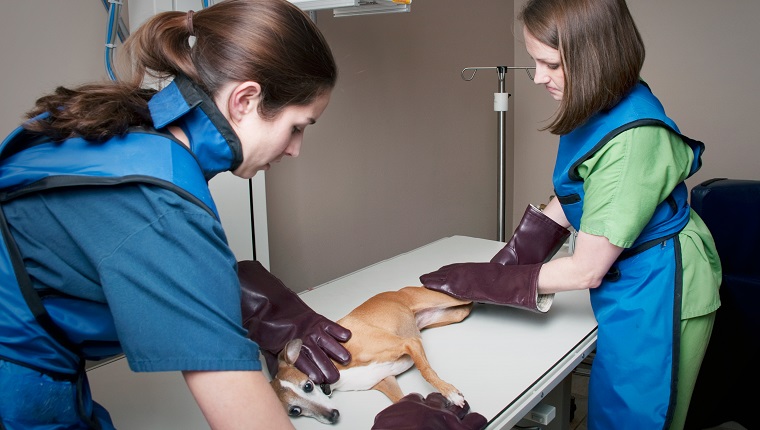Dislocated hip in dogs, also known as coxofemoral luxation, is a medical condition that occurs when the ball of a dog’s joint becomes dislocated from the socket. It can also cause issues with muscles, bones and ligaments around the hip.
In many cases, the condition is caused by a trauma and should be considered to be a medical emergency.
If you see signs that your canine might be suffering from a dislocated joint, then you must consult your veterinarian immediately. Here’s what you should know about the symptoms, causes, and treatments of dislocated hip in dogs.
Symptoms Of Dislocated Hip In Dogs
Dislocated hip in dogs can cause a range of symptoms, and the condition is considered to cause significant pain for a dog.
Some of the most commonly seen symptoms include:
- Limping
- Swelling around the hip
- Trying to avoid one leg touching the floor
- Hip area feeling warmer than usual to the touch
Causes Of Dislocated Hip In Dogs

The cause of dislocated hip in dogs is often due to a dog suffering a physical trauma.
Some of the other most common causes include:
- Hip dysplasia
- Arthritis (including osteoarthritis)
- Legg-Calve-Perthes disease
Veterinary Treatments
If you suspect that your dog is suffering from a dislocated hip, your veterinarian will want to conduct a full physical examination of your dog and also ask about any recent situations or incidents that may have caused your dog to suffer trauma. In most cases, vets will use an X-ray to confirm their diagnosis.
When it comes to treatment, there are two main courses of action: Closed reduction and open reduction.
Closed reduction does not involve any surgery. Instead, your vet will manually attempt to place your dog’s hip back in its proper place. The vet carries out this technique while your dog is under general anesthesia.
If this technique is successful, the vet will give your dog a special sling so that the hip stays in its correct place while your dog recovers.
Open reduction, on the other hand, involves a surgery to place your dog’s hip back into its proper place. A veterinary specialist will be able to suggest the precise course of action. When recovering from open reduction, your dog will also need to wear a sling for a while.
In cases of both closed and open reduction, recovering dogs will need to go through a period of crate rest and then take part in physical therapy sessions so that they can attempt to return to proper health.
During this period, your vet might also prescribe some sort of anti-inflammatory medicine for your dog. As always, if your vet prescribes any medicine for your dog, it is vital that you stick to the precise dosage and frequency instructions and complete the full course of medication.
Has your dog ever suffered from a dislocated hip? What sort of physical therapy exercises helped your dog to recover? Tell us all about it in the comments below.









